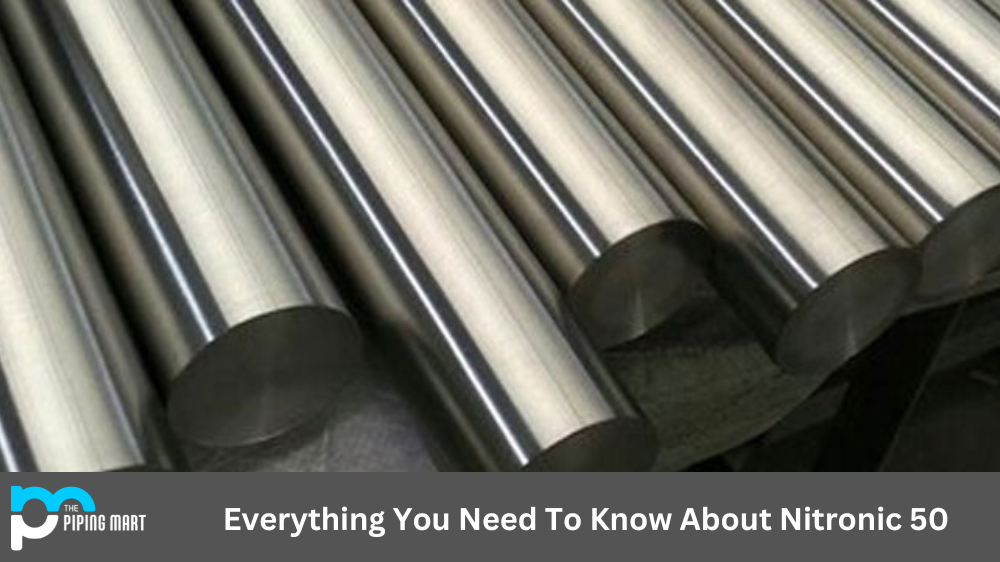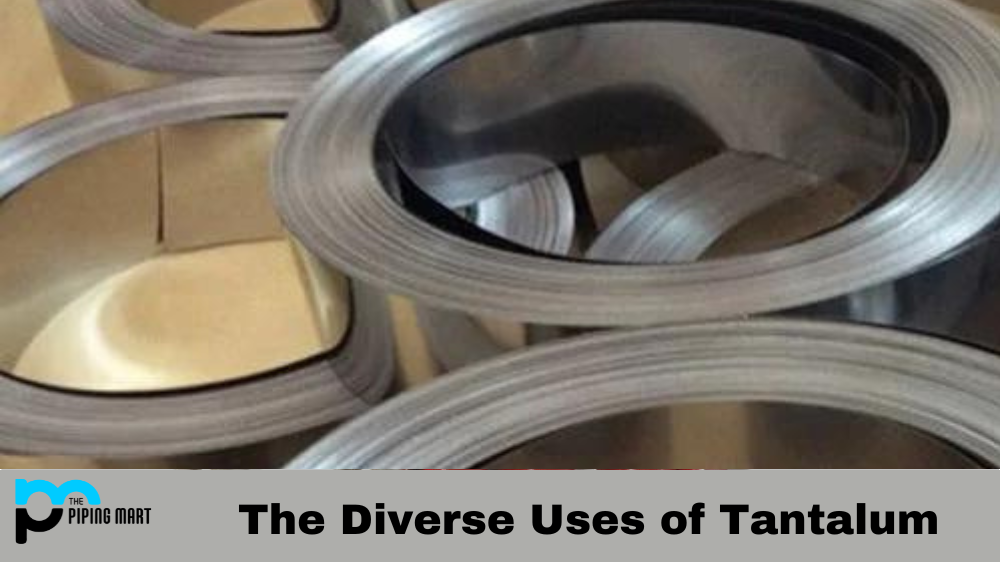Nitronic 50 is a type of stainless steel alloy with many applications. This alloy has excellent corrosion resistance and good mechanical properties, making it an ideal choice for many industries. In this blog post, we’ll discuss what Nitronic 50 is, its physical and chemical properties, and why it’s so popular.
What Is Nitronic 50?
Nitronic 50 is an austenitic stainless steel alloy that the American Special Metals Corporation developed in 1960. It contains chromium (12-14%), nickel (11-13%), manganese (2%), molybdenum (3-4%), nitrogen (0.15-0.25%), and silicon (1%). Due to its high nitrogen content, this alloy offers superior corrosion resistance to other stainless steel alloys. It also has a high work hardening rate and good mechanical properties at elevated temperatures, making it suitable for use in various industries.
Nitronic 50 Physical Properties
The physical properties of Nitronic 50 include its density (7.6 g/cm3), tensile strength (1050 MPa), and yield strength (950 MPa). It also has an elongation rate of 20%, which makes it well-suited for deep drawing operations. This alloy has a good fatigue strength and excellent creep resistance at elevated temperatures. It exhibits low thermal expansion rates and maintains good ductility even at cryogenic temperatures.
- Nitronic 50 is a high-strength, austenitic stainless steel with excellent corrosion resistance and good mechanical properties.
- It has a yield strength of over 200 KSI (1379 MPa) and ultimate tensile strength of over 220 KSI (1501 MPa).
- Nitronic 50 has good ductility and can be cold-worked to increase its strength.
- It has excellent corrosion resistance, especially in chloride-containing environments such as salt water.
- Nitronic 50 is non-magnetic and can be used in applications where magnetic materials are not suitable.
Nitronic 50 Chemical Properties
The chemical properties of Nitronic 50 make it highly resistant to general corrosion, pitting corrosion, crevice corrosion, and stress corrosion cracking. It also exhibits excellent weldability characteristics when combined with suitable welding methods such as gas tungsten arc welding, shielded metal arc welding, or electron beam welding. This alloy is non-magnetic and can be hardened through cold working processes such as rolling or extrusion but not through heat treatment methods such as solution annealing or aging processes.
- Nitronic 50 is a high-strength, low-alloy steel that is often used for applications requiring superior wear resistance and strength.
- The chemical composition of Nitronic 50 includes iron, chromium, manganese, molybdenum, and nitrogen.
- Nitronic 50 has a yield strength of 275 ksi and an ultimate tensile strength of 550 ksi.
- Nitronic 50 is resistant to corrosion and has a high degree of toughness and ductility.
- Nitronic 50 can be welded using all standard welding methods.
Conclusion:
In conclusion, Nitronic 50 is an austenitic stainless steel alloy that offers excellent corrosion resistance, good mechanical properties at elevated temperatures, and low thermal expansion rates at cryogenic temperatures. Its high nitrogen content makes it much more resistant to general corrosion than other stainless steels. In contrast, its weldability characteristics make it easy to work with when combined with suitable welding methods such as gas tungsten arc welding or shielded metal arc welding processes. This versatile alloy can be used in various automotive and aerospace industries due to its many advantageous properties, including high work hardening rate, fatigue strength, and low thermal expansion rates at cryogenic temperatures. If you’re looking for an all-purpose stainless steel alloy that provides superior performance in most applications, then consider using Nitronic 50!

Pipingmart is B2B portal specializes in industrial, metal and piping products. Also, share latest information and news related to products, materials and different types grades to help business dealing in this industry.




